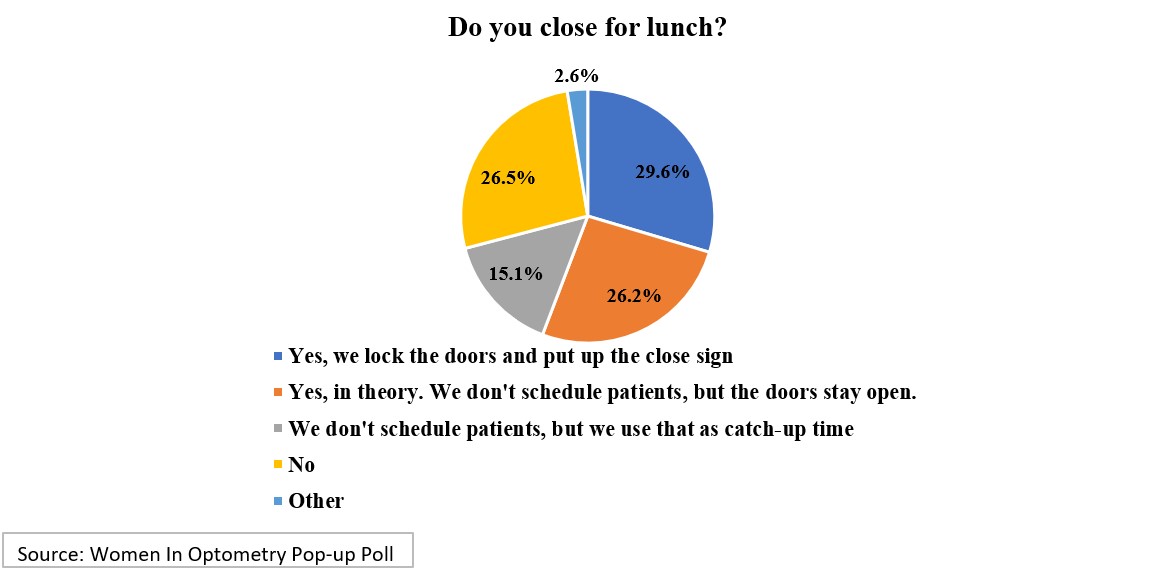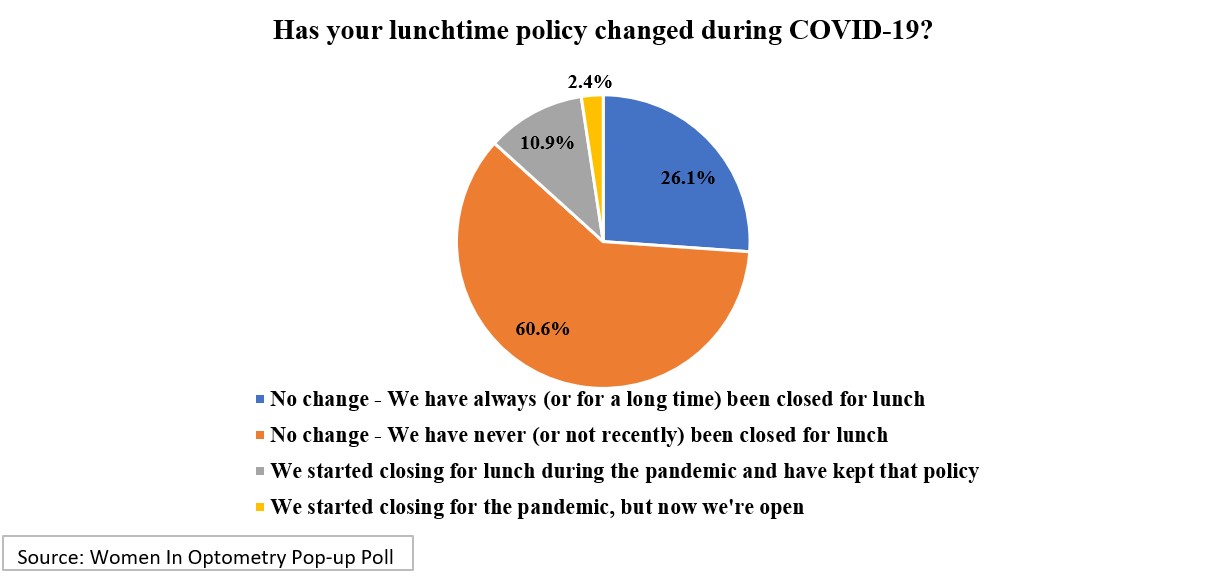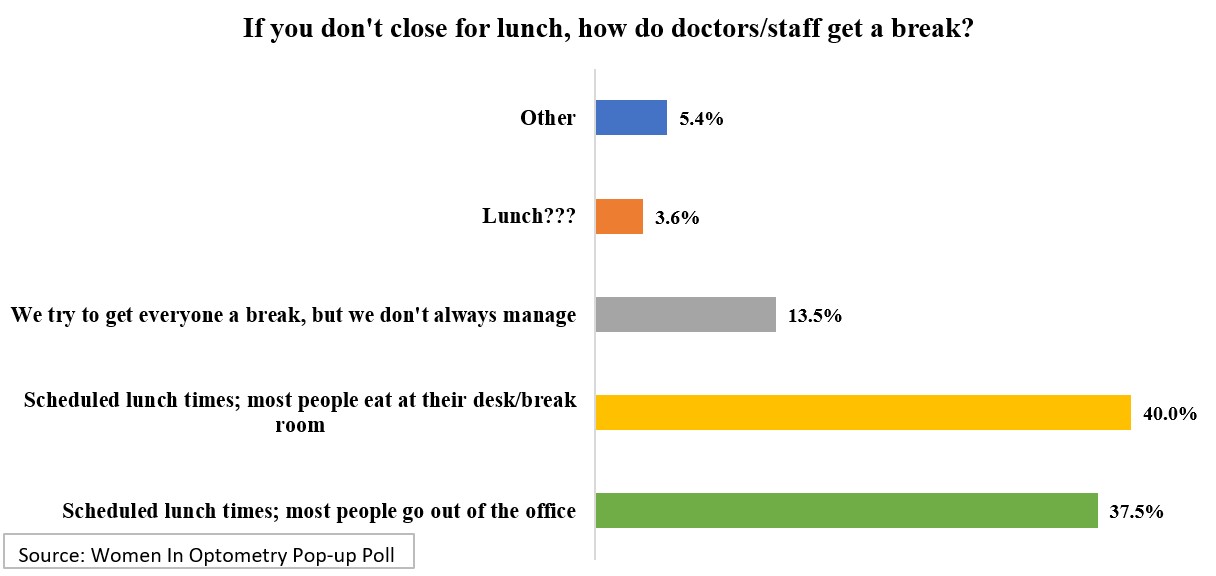Due to the coronavirus pandemic, many businesses have closed their doors and several are continuing to implement the break within the routine. CVS pharmacies and many health care offices are hanging the closed sign to give employees a break from high-stress demands. In a February and March 2022 Pop-up Poll, Women In Optometry and Review of Optometric Business asked respondents if they were implementing the same strategy.
BEHIND CLOSED DOORS
More than half of respondents shared their practice closes for lunch. Among them, one-third said they lock doors, while about one-fourth said they keep the doors open but don’t schedule patients. During this time, patients can come in to pick up their glasses or contact lens orders or make appointments. Others said they use the extra time to catch up, such as team meetings and completing unfinished tasks.
“A break for the entire office is important. We use this time to recharge, run personal errands or have a staff-working lunch. In my office, we all start lunch and close at the same time,” a female OD said.
Another female OD agreed, “It’s important to get a break for better patient care and to catch up on a very busy day. We do see representatives at lunch, too, but try to limit that to once a week.”


On the other hand, approximately 27 percent of respondents reported they don’t close for lunch. “I personally get annoyed when running errands at lunch if a business is closed, so I keep the office open based on that principle,” a female OD said. For respondents who picked “Other,” some shared how they allot two-hour lunch breaks or implement a hybrid situation such as having lunch hours for three days a week.
CORONAVIRUS-IMPACTED?


Many of these lunch break policies saw no change during the pandemic, respondents shared. About 90 percent of respondents said their lunch breaks haven’t been impacted, with 61 percent of respondents saying they have never, or not recently, been closed for lunch and 26 percent saying they have always, or for a long time, been closed for lunch. One respondent shared, “We are considering fully closing for lunch to catch up on administrative duties.”
Several respondents shared that their practice has temporarily closed its door due to understaffing or changes in patient influx. “We have always kept the office open for lunch so patients can pick up glasses, contact lenses, make appointments or purchase glasses for those not scheduled for exams. We have recently started to look at closing as staffing has changed and we are not seeing much traffic at that time,” a female respondent said. Another respondent is also optimistically considering lunch breaks to catch up on administrative tasks.
CASE-BY-CASE BASIS
For practices that don’t close for lunch, doctors and staff get their breaks mostly through scheduled lunch times where people eat at their desks or out of the office.
“We have all staff schedule lunches and many alternate so there is phone and optical coverage. Staff is encouraged to go outside the building to eat or go for a walk,” a female OD said.


Approximately 13 percent of respondents shared they try to squeeze in designated breaks but don’t always manage due to unexpected circumstances. “I love having a break, and although I don’t have a scheduled lunch, I usually have time to eat a few bites in between patients. If I don’t, I eat some bites in the bathroom (many staff members go to the bathroom to text). I don’t like it, but I knew this was the situation before I started this position, and I accept it,” a female OD said.
Of the respondents, 45 percent said they were female ODs, 38 percent said they were male ODs and 2 percent of the ODs said they preferred not to specify male or female. The remaining 15 percent were not ODs but often noted they were practice managers or administrators; most were female.



